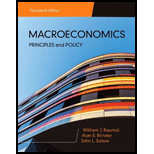Responsd to Luis Rodriguez 1800 tons of pomegranates a year is a lot of sweetness! So, you can get 71 Afghanis for $1? How cool. Does that mean you can buy a lot of stuff in Afghanistan for only $1? How do you know that your purchasing power in Afghanistan is stronger than in the United States? Yes, with an exchange rate of 71 Afghan Afghani for 1 US dollar, you can buy many things in Afghanistan for just $1. However, purchasing power isn't solely determined by the exchange rate. It also depends on the cost of goods and services in each country. For example, if a meal in Afghanistan costs 200 Afghanis, you would need about $2.82 to buy that meal in US dollars (since 200 Afghanis divided by 71 Afghanis per dollar equals approximately $2.82). So, while the exchange rate allows you to get more Afghanis for your dollars, you also need to consider how much things cost in Afghanistan. Now that the world seems to like Afghani stuff and is buying more of it, does that mean your American money will buy more Afghani money? Does that mean you can buy more things there? Explain. If the global demand for Afghan commodities rises, it could lead to an appreciation of the Afghan Afghani. This means that the value of the Afghani could increase relative to the US dollar. If the Afghanis strengthen, you will need more dollars to buy the same Afghanis. Therefore, if the Afghani appreciate it, your purchasing power in Afghanistan decreases because your dollars would buy less Afghani currency. If people in America, for example, continue to buy Afghani products, does that make the dollar stronger because more Americans are using it? How? If Americans continue to buy more Afghan products, this could influence the strength of the US dollar. When Americans purchase goods from Afghanistan, they need to exchange their dollars for Afghanis, which increases the demand for Afghanis. If the demand for Afghan products rises significantly, it could lead to a stronger Afghani and a weaker dollar in that context. Many factors, including economic stability, inflation rates, interest rates, and trade balances, influence the overall strength of a currency. While increased demand for Afghan products might have some effect, it is just one piece of a much larger economic puzzle. In summary, while the exchange rate allows you to get a lot of Afghanis for your dollars, the actual purchasing power depends on local prices. Increased demand for Afghan products could affect currency values, but the relationship between the dollar and the Afghani is influenced by many factors beyond just consumer demand.
Responsd to Luis Rodriguez
- 1800 tons of pomegranates a year is a lot of sweetness!
- So, you can get 71 Afghanis for $1? How cool. Does that mean you can buy a lot of stuff in Afghanistan for only $1? How do you know that your
purchasing power in Afghanistan is stronger than in the United States?
Yes, with an exchange rate of 71 Afghan Afghani for 1 US dollar, you can buy many things in Afghanistan for just $1. However, purchasing power isn't solely determined by the exchange rate. It also depends on the cost of goods and services in each country. For example, if a meal in Afghanistan costs 200 Afghanis, you would need about $2.82 to buy that meal in US dollars (since 200 Afghanis divided by 71 Afghanis per dollar equals approximately $2.82). So, while the exchange rate allows you to get more Afghanis for your dollars, you also need to consider how much things cost in Afghanistan.
- Now that the world seems to like Afghani stuff and is buying more of it, does that mean your American money will buy more Afghani money? Does that mean you can buy more things there? Explain.
If the global
- If people in America, for example, continue to buy Afghani products, does that make the dollar stronger because more Americans are using it? How?
If Americans continue to buy more Afghan products, this could influence the strength of the US dollar. When Americans purchase goods from Afghanistan, they need to exchange their dollars for Afghanis, which increases the demand for Afghanis. If the demand for Afghan products rises significantly, it could lead to a stronger Afghani and a weaker dollar in that context. Many factors, including economic stability, inflation rates, interest rates, and trade balances, influence the overall strength of a currency. While increased demand for Afghan products might have some effect, it is just one piece of a much larger economic puzzle. In summary, while the exchange rate allows you to get a lot of Afghanis for your dollars, the actual purchasing power depends on local prices. Increased demand for Afghan products could affect currency values, but the relationship between the dollar and the Afghani is influenced by many factors beyond just consumer demand.
Unlock instant AI solutions
Tap the button
to generate a solution








